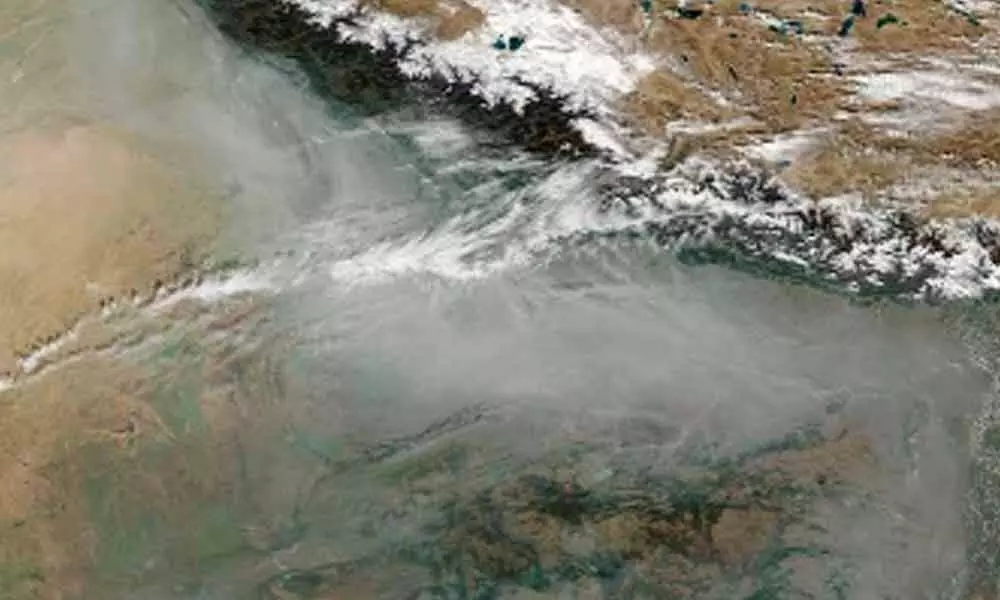Global hotspot for atmospheric ammonia
Containing high levels of ammonia, NH3 has long been designated as a hazardous material for human health
image for illustrative purpose

Kolkata: The Indo-Gangetic Plain (IGP) is the global hot-spot of atmospheric ammonia (NH3), containing high levels of ammonia have long been designated as a hazardous material for human health, thanks to intense agricultural activities and fertilizer production there. And atmospheric ammonia is growing rapidly at a rate of 0.08 per cent annually during the summer-monsoon (Kharif crop period) season from June to August, suggested a recent study by IIT Kharagpur in collaboration with IITM Pune and European researchers. Significantly, atmospheric ammonia is typically generated due to agricultural activities including the use of nitrogenous fertilizers, manure management, soil and water management practices and animal husbandry. It is very dynamic as it is constantly exchanged between the
atmosphere and biosphere. In India, there has been a lack of detailed information about atmospheric ammonia, which is a significant contributor to atmospheric pollution and deterioration of air quality. This is particularly important for IGP as there are many cities including Delhi. This study titled "Record high levels of atmospheric ammonia over India: Spatial and temporal analyses" and published recently in Elsevier journal.
"Science of the Total Environment", is pioneering research from India in measuring the dynamics of atmospheric ammonia over the region and validated the data supporting India's commitment to reduce atmospheric pollution and development of global pollution control initiatives.
"The satellite data we collected for agricultural emissions show a positive correlation of atmospheric ammonia with total fertilizer consumption and temperature since high temperature favours volatilization and is negatively correlated with total precipitation as wet deposition helps removal of atmospheric ammonia," explained Prof. Jayanarayanan Kuttippurath from IIT Kharagpur's Centre for Oceans, Rivers, Atmosphere.
Apart from IGP, data from across the country show some regional hotspots in northwest and southeast India. The study also mentions that there are positive trends in atmospheric NH3 over the agricultural areas of the United States, China and Europe, about 1.8–2.61 per cent annually, depending on regions. However, the general trend in atmospheric ammonia over India is negative in most seasons. "Observing the overall trend, we can therefore assert to have sincere to our pledge at the Paris Climate Summit towards reducing atmospheric emissions through initiatives under the National Clean Air Programme though we have to be relentless in our efforts to reduce the emissions at the Indo Gangetic Plain, which would otherwise have detrimental effects on the human health, ecosystems and climate," added Prof. Kuttippurath.
Co-authors of the study- Ajay Singh and Prof. Nirupama Mallick from the IIT Kharagpur's Department of Agricultural and Food Engineering emphasized the wider adoption of precision farming along with seasonal restrictions on the use of fertilizers. "Agriculture, in its conventional form, contributes significantly to the atmospheric emission of gaseous ammonia that plays a key role in the deterioration of air quality over the whole of India by actively contributing to the formation of secondary aerosols. This demands regulations on the amount of fertilizer application in cropping seasons in arable lands, in place of conventional blanket recommendation practices, along with viable strategies to curb farm emissions" remarked Prof Mallick from the Dept. of AGFE, IIT-KGP.
Ritwik Mukherjee

